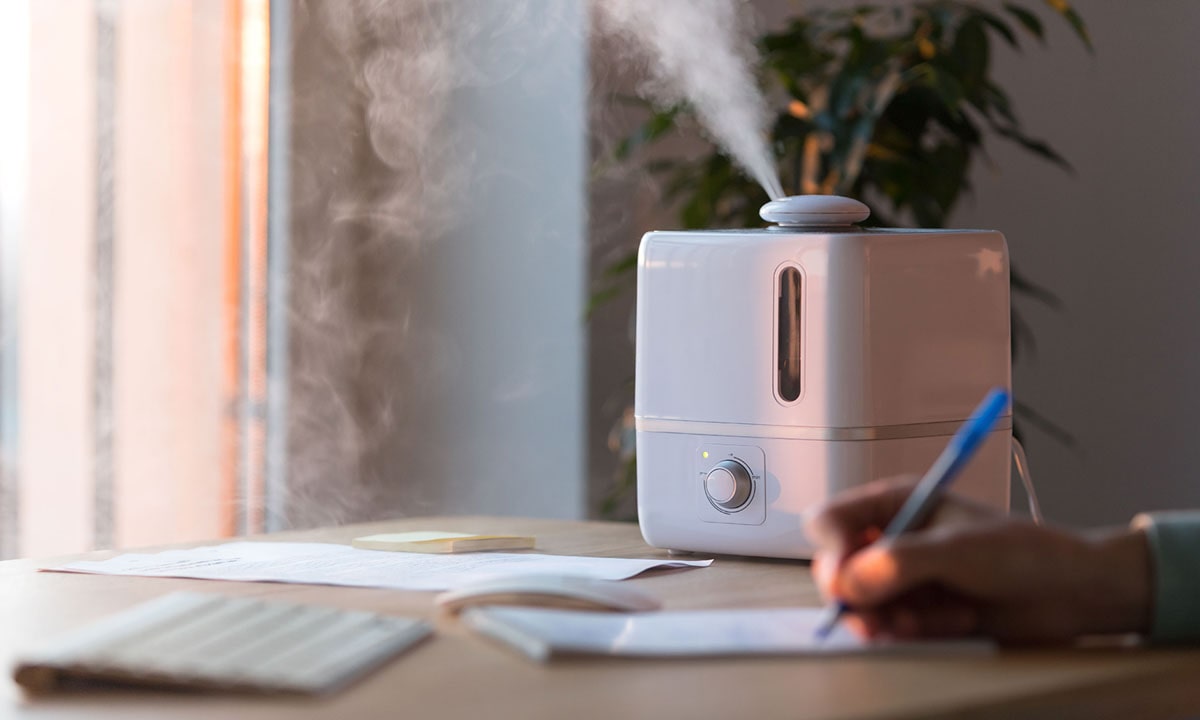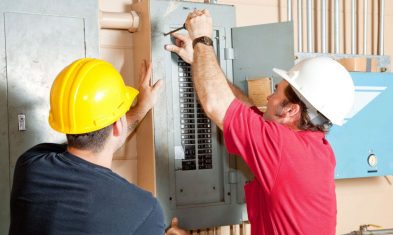As Winter approaches, we jump right into the heating season. While everyone wants their home and businesses warm this time of year, one huge problem can result from this: uncomfortably dry air. This makes a central air humidifier the perfect solution to add needed moisture back into the air.
This article will explain the types of central air humidifier as well as its advantages, benefits and cost.
What is a Central Air Humidifier?
Humidity is typically only mentioned when there’s too much moisture in the air. However, too little moisture can also be a problem. The purpose of a central air humidifier is to ensure that a comfortable amount of moisture is in the air. A humidity level between 40 to 60% is considered pleasant.
The humidistat, similar to a thermostat, is the part of the HVAC system that controls humidity. The humidistat controls the amount of moisture in the air, allowing the humidification system to manage your building’s humidity level effectively.
When the air becomes too dry, the central air humidifier adds the necessary amount of water vapor to the air flowing through the HVAC system. Water is evaporated by the heat from the furnace, producing water vapor for the central air humidifier to disperse.
Advantages
There are two main types of humidifiers. Central air humidifiers operate through the HVAC system, and there’s standalone, or portable humidifiers. Check out the advantages to each of these humidifiers.
Central Air Humidifier
- Provides the optimal level of moisture throughout the entire home or building
- Requires less maintenance since it’s connected to the plumbing or HVAC system
- Quiet and out of sight
- Energy efficient models available
Portable Humidifier
- Easily moved from room to room
- Benefits someone who is sick or has allergies
- Great for those living in residences without central air
- Works well in smaller homes or apartments
Benefits
Let’s look at some ways that a central air humidifier can benefit a home or building.
Increased Comfort
With reasonable indoor humidity levels, there will be balanced moisture throughout the home. In turn, there won’t be any common dry weather problems, such as nosebleeds, dry eyes, itchy skin, etc.
Better Health
Low humidity levels can result in the spread of colds. A drier environment can allow dangerous viruses to thrive, but a central air humidifier can help stop the spread.
Save Money and Energy
Humidified air can save you more money on your heating bill by allowing the thermostat to stay at a higher temperature.
Central Air Humidifier Types
There are three main types of central air humidifiers.
Steam
This type operates by electrically boiling water to produce steam, therefore humidity. The steam is then transferred through the system and dispersed throughout the home or building.
Steam humidifiers are the best and most efficient way to maintain an optimal humidity level in the home. Steam humidifiers also provide the most natural form of humidity, and moisture independent of the heating/cooling system.
Drum-Type
A rotating, sponge-like surface absorbs water from a tray underneath. The absorbed water then evaporates, releasing moisture into the air.
Flow-Through
The most common type of central air humidifier. Water flows into an aluminum panel, air blows through the panel, and then evaporated water is released into the air.
Cost
Central air humidifiers are relatively inexpensive considering their health and comfort benefits. However, the cost depends on style and capacity. A central air humidifier’s national average ranges between $400 and $1,200, with the top of the line costing $2,200.
The drum type is the least expensive, ranging from $150 to $250. Flow-through can range from $200 to $300. The most popular type, a steam humidifier, can cost anywhere from $300 to $1,500.
Keep in mind that these are the prices for the unit only. Once installation is factored in, the price may be considerably higher.
Popular Brands
The price of central air humidifiers can vary depending on the specific brand.
- Honeywell: This brand is well known for its home heating and cooling devices, specifically thermostats. Price Range: $200 – $1,000
- Aprilaire: One of the most popular brands for whole-house humidifiers. Price Range: $250 – $1,500
- Lennox: A notable brand for furnaces. Price Range: $250 – $1,200
- Emerson: Makers of high-quality steam humidifiers that specialize in the central air industry. Price Range: $700 – $1,200
Pricing Based on House Size and Capacity
Since humidifiers use water, they are measured by GPD (gallons per day). Let’s look at cost based on the square footage of a home, and its GPD usage.
- 1000 sq. ft = 1.4gpd – 4gpd = $150 – $500
- 1,500 sq. ft = 3.2gpd – 7gpd = $200 – $1,000
- 2,000 sq. ft = 4.9 gpd – 10 gpd = $400 – $1,200
- 2,500 sq. ft = 6.6gpd – 13.1gpd = $500 – $1,300
- 3,000 sq. ft = 8.3 gpd – 16.1 gpd = $700 – $1,500
As you can see, there’s a direct correlation to square footage and overall cost of operation for any central air humidifier.
Conclusion
A central air humidifier can create optimal humidity levels for your entire home or building. Not only does it enhance the air quality in your space, but it can also offer increased comfort and health benefits.



